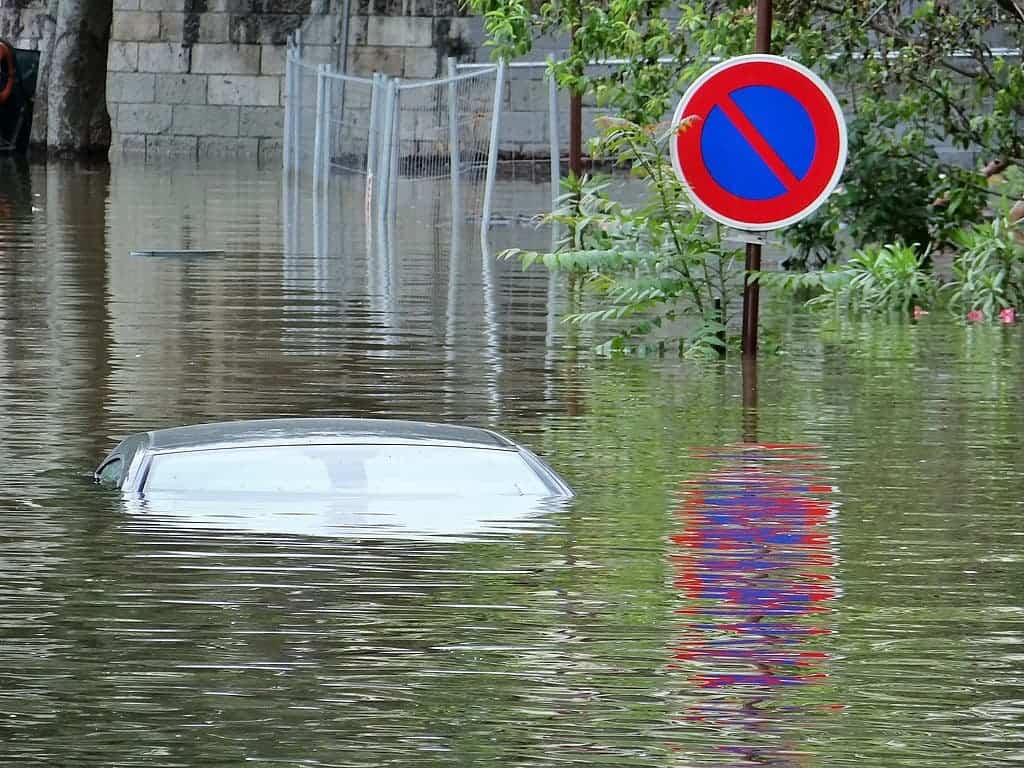A good rainfall is usually very welcome after a long dry period. But when the soils are dry and hard, rainwater can quickly become a hazard and lead to flash flooding — a specific type of flooding that occurs in a short time. As climate change makes droughts and extreme weather more likely, this phenomenon is likely to become more frequent. Here’s how it works.

When more rainfall lands in an area than the ground can absorb, or it falls in areas with impermeable surfaces such as concrete and asphalt that prevent the ground from absorbing the precipitation, the water has few places to go and rises fast. This can happen both in rural and urban areas, and especially in places near water bodies. So far, nothing new.
If an area has recently experienced a drought, the soil would be too dry and hardened to absorb the precipitation. That’s why flash floods are common in desert landscapes and in areas with shallow soil depths above solid bedrock. Flooding can also happen in areas that have had recent rainfall, as the soil may not be able to take more water.
“Dry, parched, ground doesn’t let water in as effectively as already moist ground. There are a number of reasons that happens but [among the most important is] that the ground is compacted as moisture has been removed by evaporation and baking,” Rob Thompson, a scientist at the University of Reading, recently told The Independent.
The effect drought can have on a soil is something called hydrophobicity, said Thompson. The soil particles become more “hydrophobic,” meaning they repel more water, and surface tension helps hold that water from falling through gaps in the soil. The water then sits on the surface in a sort of big pool or runs off down slopes, he said.
A tweet by Thompson illustrates what happens when the drought-parched ground gets a lot of rainfall. In the video, the scientist is seen placing three glasses of water upside-down on wet, normal, and dry ground. The water in the first and second one is absorbed at different rates, while the one on the dry ground barely seems to absorb at all.
In this experiment Dr Rob Thompson of @UniRdg_Met shows just how long it takes water to soak into parched ground, illustrating why heavy rainfall after a #drought can be dangerous and might lead to flashfloods. @R0b1et @UniRdg_water pic.twitter.com/zbb3xLTXdK
— Uni of Reading (@UniofReading) August 10, 2022
The way ahead
Flash floods usually catch people by surprise, despite weather forecasters and authorities trying to warn and prepare communities. As water runs downhill, rainfall will seek the lowest point in a potential pathway. In cities, that’s usually streets, parking lots, subways, and basements. These weather events can move buildings off their foundations and wash away cars — it’s a surprisingly powerful phenomenon.
This is what we saw recently in California’s hot and dry Death Valley, where a “once in a 1,000-year” deluge damaged infrastructure, washed away roads and carried away cars. The storm poured an amount of water equal to roughly 75% of the average annual total in three hours. Now there are similar concerns in the UK and much of Europe after weeks of hot and dry conditions.
With climate change, experts believe this trend will only accentuate, with more intense storm events expected to happen as a consequence of global warming. Hydrologists and engineers are working to understand how to best adapt to this, including modelling flood events and development trends so that they can increase resilience in urban and rural settings.


